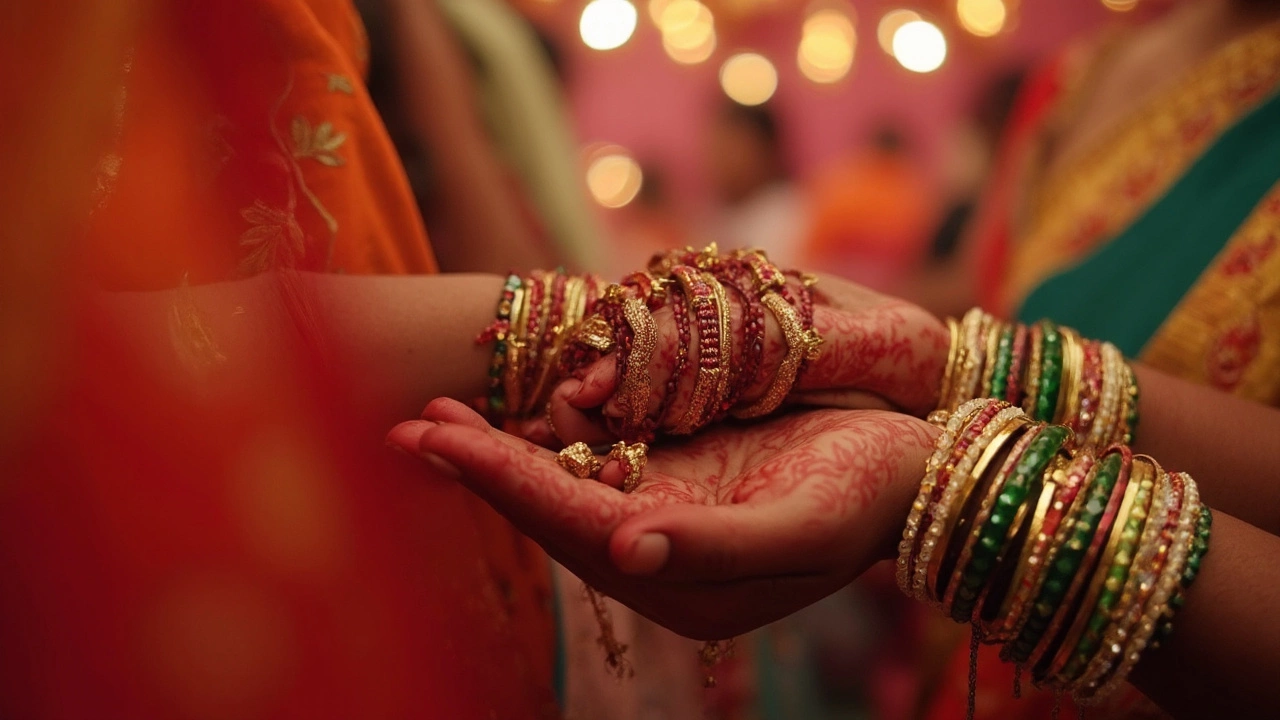Indian Women – Traditions, Jewelry & Modern Style
When talking about Indian women, the diverse group of women living in India who blend centuries‑old customs with contemporary life. Also known as Indian females, they play key roles in family, work, and society while staying deeply connected to cultural symbols. From bustling metros to quiet villages, their daily routines, celebrations, and fashion choices reflect a rich tapestry of language, religion, and regional flair. Indian women constantly negotiate tradition and trend, making their style a living narrative rather than a static picture.
Key Traditions & Jewelry
One of the most recognizable symbols of marriage is the Mangalsutra, a gold or gold‑plated necklace that signifies a woman's marital status in many Hindu communities. It is often gifted by the groom's family and is worn daily as a reminder of vows, linking personal identity to family heritage. Alongside the mangalsutra, Gold jewelry, pieces stamped with purity marks such as 750 that denote 18‑karat gold content serves both as adornment and as an investment, especially during festivals and weddings. Many Indian women prefer one‑gram gold pieces because they offer the look of pure gold without the heavy price tag, allowing them to swap styles regularly.
Nose adornments add another layer of cultural expression. A nose pin, a small stud or hoop placed on the left nostril, traditionally associated with marital bliss and health can be simple silver or embellished with gemstones. The choice of nose pin often depends on face shape, regional customs, and personal taste, making it a versatile accessory that transitions from everyday wear to festive glamour. Together, mangalsutra, gold jewelry, and nose pins illustrate how Indian women use jewelry to communicate status, faith, and personal style all at once.
The red dot on the forehead, known as the Bindi, a decorative mark that can be a stick‑on sticker, a jeweled pin, or a painted dot, symbolizing marital bliss, spiritual focus, or simply fashion, is another daily staple. While traditionally a married woman's sign, modern Indian women of all ages wear bindi in countless colors and shapes to match outfits, celebrate festivals, or make a bold statement. The bindi connects the wearer to a shared cultural language, but it also showcases how traditions evolve: today you’ll see minimalist metallic bindi designs paired with street‑wear looks, just as you’ll see elaborate silk‑bound bangles at a wedding ceremony.
These symbols don’t exist in isolation. A bride’s choora (red‑and‑gold bangles), the ceremonial removal of the choora, and the gifting of bangles all weave into the larger story of how Indian women mark life stages. Similarly, the practice of wearing a bindi can influence the choice of hair accessories, makeup shades, and even the cut of a sari or lehenga. When Indian women plan their wardrobe, they often start with the jewelry palette—deciding whether a 750 gold mangalsutra will anchor a look or if a pair of emerald earrings will add a pop of color—then layer clothing, accessories, and makeup around those anchor pieces.
Across generations, the dialogue between heritage and innovation remains vibrant. Young Indian women living abroad blend Western silhouettes with classic gold chains, while rural artisans keep hand‑crafted gold techniques alive for urban markets. Whether it’s a minimalist gold chain for office wear, a sparkling nose ring for a music festival, or a traditional mangalsutra at a family wedding, the choices reflect personal identity, community expectations, and economic considerations.
Below you’ll find a curated set of articles that dive deeper into these topics—everything from price comparisons of gold in India vs. the USA, to the etiquette of who gifts the mangalsutra, to modern takes on bindi styles. Each piece offers practical tips, cultural context, and up‑to‑date trends, helping you understand not just what Indian women wear, but why they choose each piece and how those choices shape everyday life.
